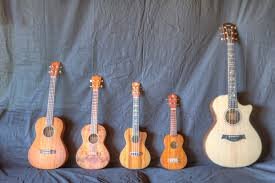Ukulele: History, Fun Facts, and Benefits of Learning
The ukulele, which comes from the guitar family, is popular in both traditional and pop music.
The ukulele is typically made of four nylon or gut strings or sequences of strings, some of which may be harmonized in courses. Many famed artists like Eddie Vedder and Jason Mraz have used this instrument to enrich their classical songs.
The uke provides an excellent starting point for music students and amateur musicians. Musicians of any age can quickly learn to play this instrument. The ukulele is available in four different sizes with different pitches, tones, fretboards, and tunes.
History of the Ukulele
The ukulele has a rich history and tradition. While this instrument first appeared in Hawaii in the nineteenth century, its roots are found in Portugal. However, it is not known as to who actually invented the uke. Despite this, the story of how this instrument rose to popularity is an exciting one.
Historians agree that the Portuguese braguinha or machete de braga is the instrument that led to the creation of the ukulele. The braguinha is a small instrument as compared to the guitar but operates quite similar to the first four stringers of the guitar.
On the other hand, the ukulele has the same scale length as the machete but is tuned GCEA instead of DGBD. In other words, we can say that the Hawaiians nicknamed the braguinha as ukulele. Let’s see how this happened.
By the mid-nineteenth century, Hawaii’s sugar industry was booming, which created a shortage of workforce in the area. At the same time, Portugal was experiencing economic collapse. The economic downturn forced many Portuguese to immigrate to Hawaii to find employment opportunities in the sugar industry.
Many Portuguese arrived in Hawaii along with their families and machetes. Among them were three woodworkers named Manuel Nunes, Augusto Dias, and Jose do Espirito (originally from Madeira’s port city, Funchal). A man named Joao Fernandes was also among the passengers. He played the machete and sang a thanksgiving song upon arrival at the Honolulu Harbor on August 23, 1879.
Fernandes’s performance moved the Hawaiians so much so that it made them obsessed with the branguinha. The Hawaiians nicknamed the instrument as the "ukulele," which means “jumping flea.’ This term refers to the way Fernandes’ fingers moved on the fretboard.
Many Portuguese immigrants lived in Hawaii, but Nunes, Dias, and Santos traveled to Honolulu to find work upon the completion of their contractual employment in Hawaii. They started woodwork and instruments making business in Honolulu. Their efforts further promoted the ukulele.
It is not clear as to who made the first ukulele. What we know is that it went from Portugal to Hawaii as a branguinha. Once in Hawaii and Honolulu, the machete changed in size and shape and got reentrant tuning that gave the ukulele its exclusive sound and ease of playability.
The Hawaiian king David Kalakauna was in love with the ukulele. He introduced the instrument into the Hawaiian music of that time, providing the instrument the backing of the royalty. This move made the ukulele an inseparable part of the Hawaiian music tradition.
While the popularity of the ukulele began to vane with the start of rock and roll in the 1950s, it has made a successful comeback in modern times. Ukulele sales saw a sharp spike in the United States between 2009 and 2018. Figures by Statista show that 1.77 million ukulele were sold in the US from 2009 to 2018. The popularity of the ukulele is expected to rise in the coming years.
Ukulele Fun Facts
The ukulele is perhaps one of the most popular instruments right now. While the charisma of this amusing instrument is widely known, here are some fun facts about the ukulele that you might be surprised to know:
Children of any age can quickly learn to play the ukulele. Image by Superikonoskop
The first ukulele is said to have been built in 1879; however, it is not clear who invented this instrument.
Renowned astronaut Neil Armstrong had a great passion for playing the ukulele.
C. F. Martin Guitars manufactured ukulele in the 1920s, and the sales of this instrument were on par with that of guitars.
Lately, the ukulele business has witnessed a boom. Sales of ukulele have grown 500-600 percent in the past few years.
Initially, the ukulele strings were produced from sheep or cat gut. The modern ukulele’s feature strings made of nylon.
Beatle George Harrison had a collection of hundreds of ukuleles.
“I’m Yours” by Jason Mraz remains the top-selling ukulele song as of now. It was released in 2008.
Most ukuleles are made of mahogany wood; however, the cheap ones (usually made for children) are made of plastic.
George Harrison and Paul McCartney came out as fans of the ukulele in the mid-1990s.
Why Choose Ukulele?
Playing the ukulele comes with many benefits. Here are some reasons why you should choose the ukulele for yourself and your children.
Ukuleles are portable and easy to hold. Also, they are easy to learn than a guitar. Children can easily hold and play this instrument. If you are considering guitar training for your kid, the ukulele can be a good starting point.
Ukulele lessons can improve brain-eye-hand coordination.
Playing the ukulele improves brain-hand-eye coordination. You have to concentrate on what strings you are plucking to generate the correct note. The exchange of information between your brain, eyes, and fingers can sharpen your coordination and mental and motor skills.
You can easily play most songs on the ukulele than on any other instrument.
Playing instruments, including the ukulele, can improve your immune system. While there is no evidence how this happens, experts think it happens because playing instrument decreases stress level, which is imperative to have a stronger immune system.
Ukuleles are inexpensive. The average price for a good ukulele is $200; however, you can also buy a cheaper version for as low as $50.
If you want your child to play instruments like bass or violin, starting with a ukulele can be an excellent option. The skills gained during the ukulele training can easily be transferred to the violin, guitar, and other instruments.
Playing the ukulele is fun. Generally, children become excited as they quickly learn to play this instrument.
Now that you have got much information about the ukulele and are aware of its benefits, it is time to get your child strumming. Contact us now to get more information on registering your kid for our next music class.
Learn more about ukulele lessons at Stage Music Center
Other music subjects you might be interested in from our blog:
Benefits of playing in recitals
Importance of Introduction to Music at an Early Stage: Little Mozart


